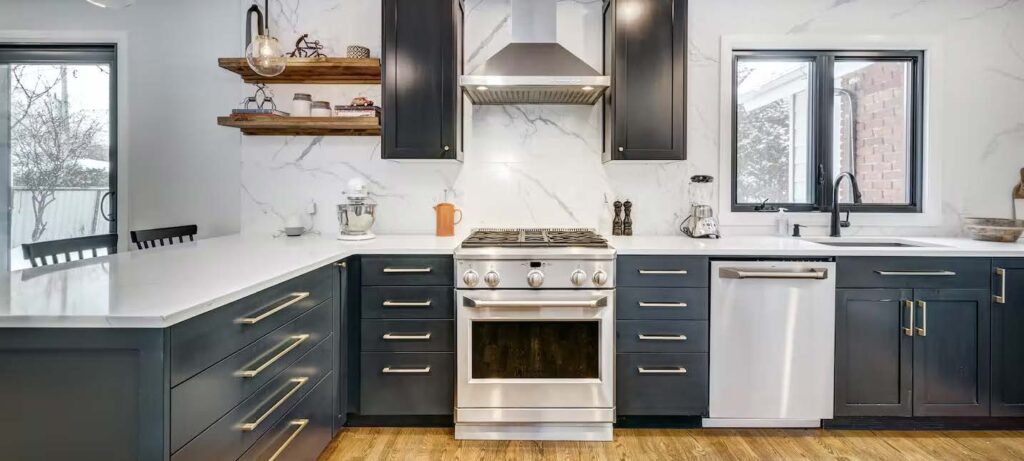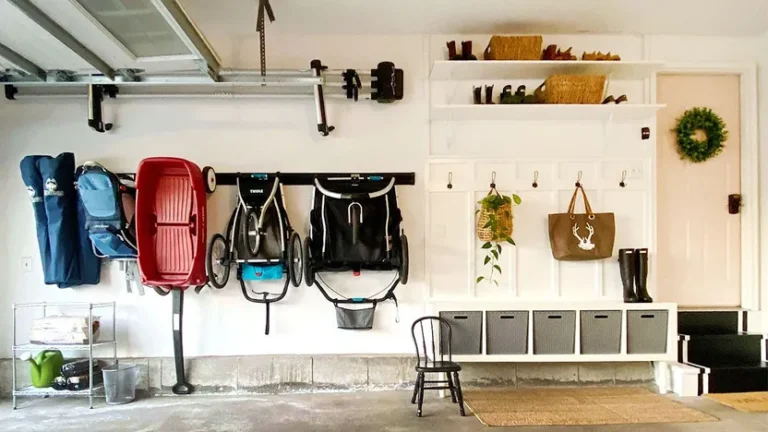
As the U.S. housing market conditions shift more in favor of buyers, there are upgrades home sellers may consider to ensure a more competitive listing.
American chef and TV personality Andrew Zimmern often says “Life happens in the kitchen.” It’s no wonder then, that the kitchen and bathroom – potentially the two most functional rooms in a home – are also the focal point of nearly every house for sale.
The kitchen and bathrooms are important places to consider investing money into when preparing a home for sale. In fact, according to a recent consumer survey conducted by RE/MAX, the top upgrades sellers plan to make prior to selling are to the bathroom (49%) and the kitchen (48%).
What type of kitchen and bathroom upgrades are necessary? Expert RE/MAX agents have the answers – but it all starts by understanding what type of housing market sellers are facing.
Understanding homebuyer patterns
Alison Malkin, Broker/Owner of RE/MAX Essentia in Avon, Connecticut, believes the last couple of years were an aberration in her local housing market.
“If a house wasn’t falling down, it had potential. Sellers got away with not having to do as much in order to sell, but that’s not what we’re seeing anymore,” she says.
Christian Fuentes, a rehabber and co-Broker/Owner of RE/MAX Top Producers in Diamond Bar, California, agrees.
“Now the market is opposite,” he says. “Buyers are picky. They are looking for move-in-ready homes and are very cautious on what they are going to spend.”
In other words, homeowners who are thinking about selling in the months ahead need to consider what updates their home may need to help it stand out from the crowd. Decluttering, cleaning and staging are all necessary pieces to the home selling formula. But depending on the seller – and the current state of the home – some opt to do a bit more.
Richelle Taylor, an agent with RE/MAX Results in Minneapolis, Minnesota, who has experience rehabbing properties, says, “If your home is newer looking and updated, buyers are likely going to look at yours over similar options – and your home could sell faster and for more money.”
Finding balance in updates
Because the kitchen and bathroom are the two of the most functional rooms in a home, updating them can be paramount prior to listing the property for sale. But a complete overhaul isn’t necessarily warranted, according to some real estate agents. In fact, due to costs and time, the all-or-nothing method isn’t the only way to go.
“I don’t tell people to gut their kitchen. That extreme doesn’t necessarily pay back in most cases,” says Malkin.
Instead, she recommends making smaller updates that help elevate the overall ambiance of the room.
“Try replacing the light fixtures and hardware in a kitchen or bathroom,” says Taylor. “In many cases, you can leave all of the main features the same and that space will still look completely different – and elevated. For a smaller investment, you can make a big impact in any type of home.”
The easiest things for sellers to replace prior to listing, according to agents, are typically dated builder grade materials, including:
• Retail Faucets – a rounded, single-handed faucet that turns side-to-side in a bathroom
• Vanity lights – the long plank of lightbulbs that stick out, placed above the bathroom mirror
• Dome lights – lights with a circular base and rounded cover that could appear in any room
• Fixtures – outdated drawer pulls and door handles for kitchen cabinets or bathroom vanities
Experts also suggest sellers consider a fresh coat of paint on the walls and updated flooring. For kitchens, many sellers repaint or reface cabinets, swap out countertops for a timely option like granite, or even invest in a newer appliance, like a stainless-steel fridge or updated oven. For bathrooms, sellers often repaint or reface the vanity, or swap out the mirror for a design-forward one with a different shape.
While these two spaces can make a big impact on the opinions of buyers, Malkin says another big takeaway for sellers is to synchronize updates in other parts of the house.
“If you have an updated kitchen and bathroom, but then have 1970s wall-to-wall shag carpet, that is going to offset the cohesiveness of the house. You have got to balance everything out,” she explains.
Taylor adds that first impressions are key, making the entryway another place of focus.
“When you walk in the door and there’s a grand entrance and a beautiful light, people are committed to see what will come next,” she says.
Weighing benefits and risks
For sellers, making these investments to benefit resale value, while financial, are also about time and patience.
But it can be worth it.
“A buyer sees not only the cost [of a pending project], but the effort that goes into it. And all of that has a cost against the price,” Malkin explains. “If the kitchen or bathroom has already been remodeled, and it’s to the taste of the buyer, they “hit gold” – as does the seller.”
Remodeling justifies a higher listing price, says Taylor, explaining a buyer will see all the brand-new things that they’re not going to have to replace. These cosmetic changes differ from more functional ones like new windows, electrical upgrades, or even a furnace, which are crucial to the home – but not as eye-catching during a house tour.
“The agent has to point those more functional things out and explain their benefit,” Taylor explains. “But prospective buyers see new stainless-steel appliances and countertops and they’re impressed.”
At the end of the day, Fuentes says it all comes down to the homeowner’s budget, and either way, the home will likely sell – especially when it’s being represented by a real estate professional with a track record of success.
“As an agent, we’re constantly adjusting prices,” he says. “If you have a brand-new kitchen, completely remodeled in the last two years, it’s a wow factor. We’ll price it right and it’ll likely help the home sell for more. If you don’t have the new kitchen, we price it accordingly so the buyers can come in and do the remodel themselves.”
When possible, agents agree that updates to high traffic areas – like kitchens and bathrooms – should be done while the seller is still living in the home and can reap the benefit of enjoying a renovated space.
“If you’re going to put that much effort into renovating your kitchen, enjoy it while you’re there and then sell your house when you’re ready to,” Malkin advises.
After all, if the kitchen truly is the center of the home, you might as well update and savor the flavor of life.
Article originally appeared on RE/MAX.com.







